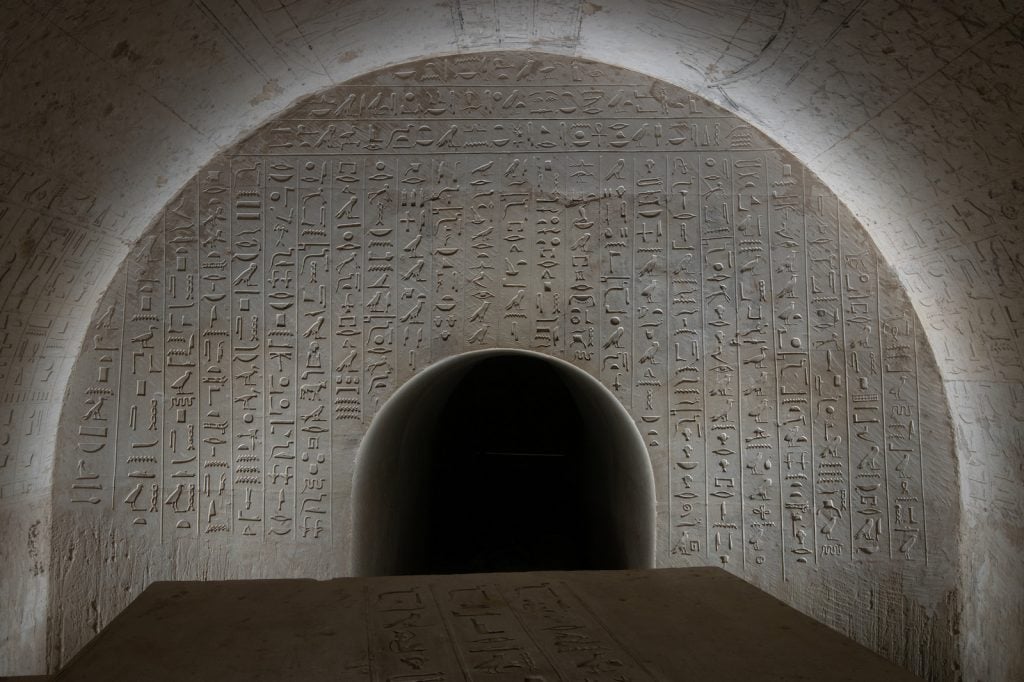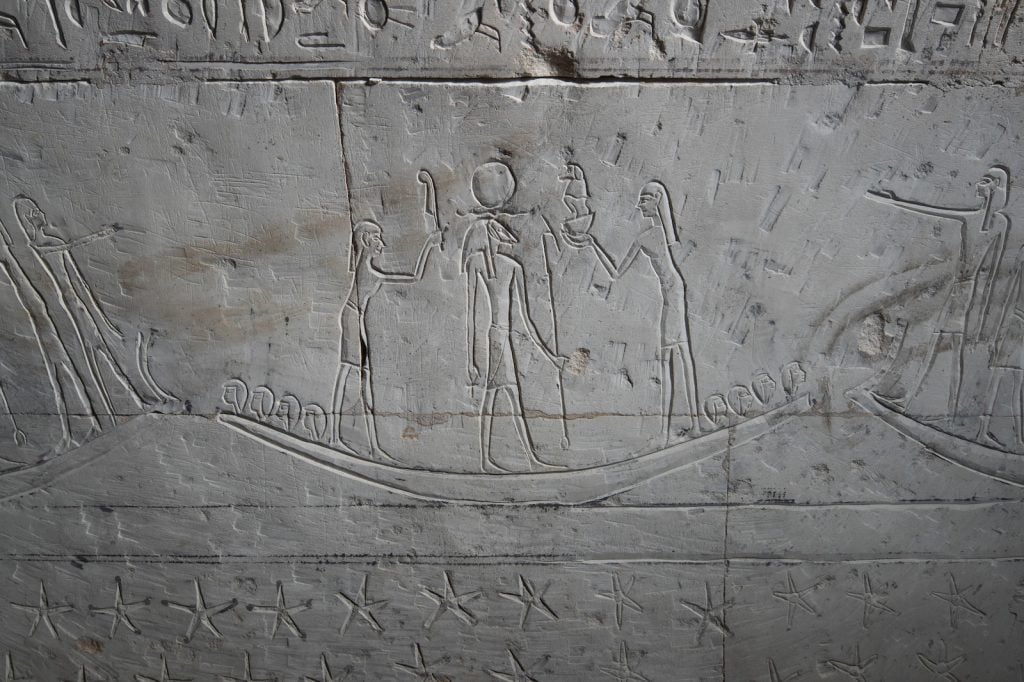Archaeology & History
The Tomb of a Previously Unknown Dignitary Comes to Light in Egypt
The richly decorated chamber was partly inscribed with spells to ward off snake bites.

The tomb of a previously unknown Egyptian dignitary, rich with inscriptions and artwork, has come to light in Abusir, between Giza and Saqqara. Archaeologists at the Czech Institute of Egyptology (CIE) say the tomb dates to the 1st millennium BC.
“It is a richly decorated shaft tomb of medium size, whose owner, a certain Djehutyemhat, held the office of a royal scribe,” says Ladislav Bareš, who has coordinated Czech excavations of tombs in Abusir for more than 20 years, in a press release. “This new find, together with our previous discoveries from this excavation site, as was the large-scale shaft tomb of general Wahibrameryneith, will shed more light on historical changes taking place in Egypt in the turbulent times of the 6th to 5th centuries BC.”
The burial chamber is extensively decorated, including an entrance wall with with a long sequence of spells warding off snake bites. (Curiously, the researchers point out, the snake also served as a protector of the deceased and his mummy in the afterlife.) Some walls are adorned with ritual offerings and the ceiling is decorated with depictions of the sun’s journey across the sky. A stone sarcophagus bears hieroglyphic inscriptions inside and out, as well as depictions of the gods.

The solar god Ra during his nightly journey. Photo: Petr Košárek, © Czech Institute of Egyptology, Charles University.
Djehutyemhat died young, at about 25, and his remains indicate wear on the spine from sedentary work as well as osteoporosis. Tantalizingly, others buried in the same site also suffered from osteoporosis, leading the experts to speculate that Djehutyemhat may be related to them.
Ancient as it is, this tomb’s design actually looks farther back, to a previous era of Egyptian society.
“The recently discovered tomb of the high official Djehutyemhat in Abusir is the latest piece of knowledge in the mosaic of the history of ancient Egypt at the end of its glory in the Late Period, in the 6th century BC,” says Miroslav Bárta, director of Czech archaeological excavations in Abusir. “Shaft tombs represent a specific type of tombs of this era and an attempt of ancient Egyptian elites for a renaissance. They reflect the shape and symbolism of the tomb of the king Djoser, the founder of the famous Old Kingdom, the era of the pyramid builders of the 3rd millennium BC.”





